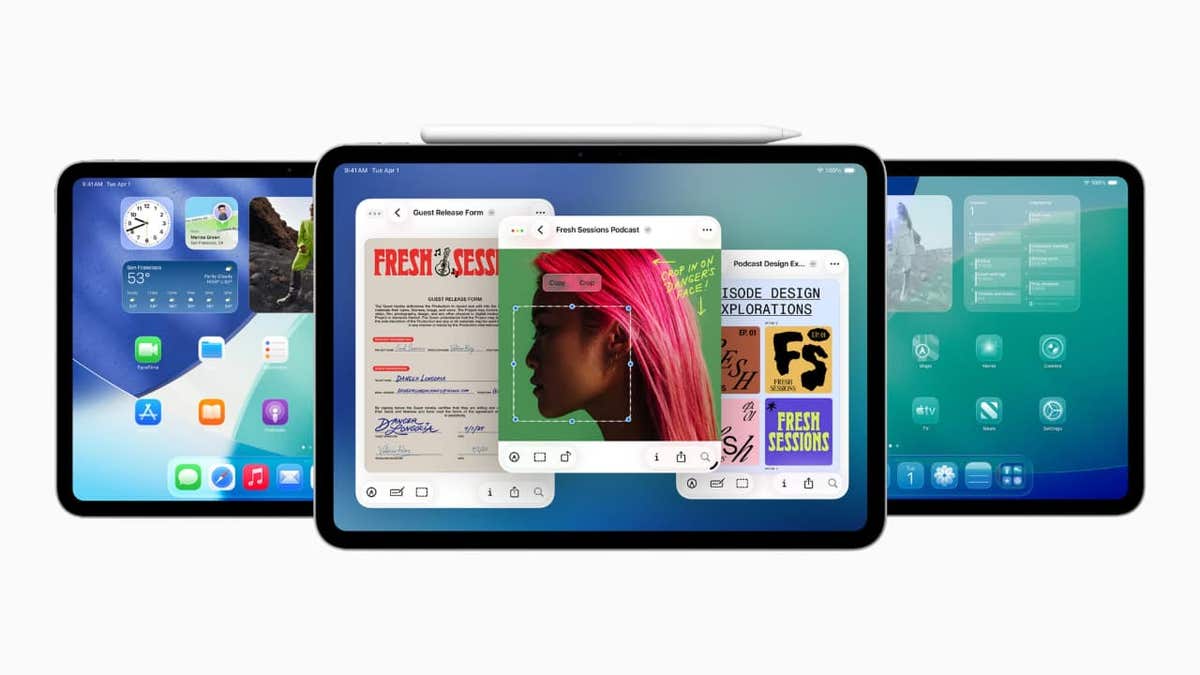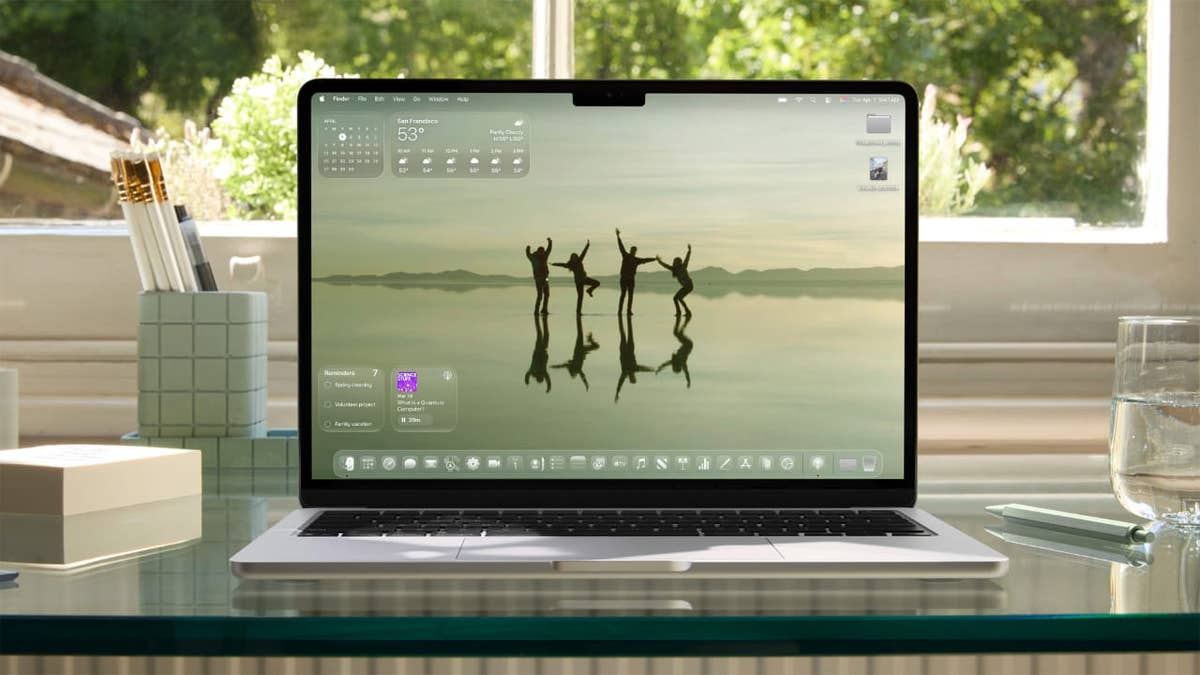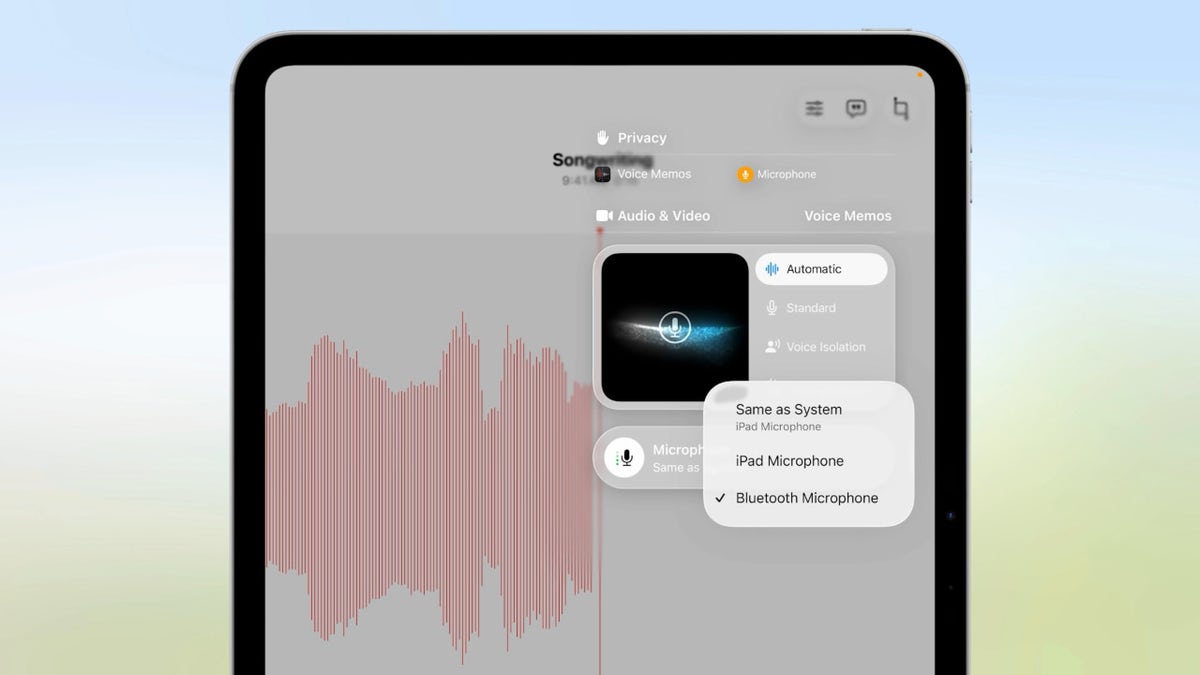NEWYou can now listen to Fox News articles!
Apple’s annual Worldwide Developers Conference (WWDC) kicked off on Monday and runs through Friday. But the Cupertino-based company is not making us wait until the end. The major announcements have already been made, and there are quite a few. The headliners are new software versions for Macs, iPhones, iPads and Vision.
We are seeing a unified naming scheme, with every software version getting a “26” suffix. This means iOS 26, macOS 26, iPadOS 26, watchOS 26 and more. Beyond the name changes, the software has received major updates across devices, including a new Liquid Glass design that reminds me a bit of the old Windows Vista.
All of this sounds great, but I couldn’t help but notice that the AI features this year feel subpar. They seem even duller when you consider the cutting-edge AI announcements Google made last month.
Let’s dive deeper into WWDC 2025 and Apple’s ongoing AI crisis.
iOS 26 and iPadOS 26: Unified naming and the new Liquid Glass design
One of the most noticeable changes this year is Apple’s decision to unify the naming across all its platforms. Instead of traditional version numbers, Apple is now using the year after release as the version name. So the new names are iOS 26, iPadOS 26, macOS 26, watchOS 26, tvOS 26 and visionOS 26. These updates will arrive in late 2025, but the new naming makes it much easier to keep track compared to older versions like iOS 19, watchOS 12 or macOS 16.
FIRST 15 THINGS TO DO OR TRY FIRST WHEN YOU GET A NEW IPHONE
On iOS 26 and iPadOS 26, the updates bring a fresh look thanks to the Liquid Glass design. This design language uses translucent materials and subtle animations to create a sense of depth and clarity. Some might say it feels a little nostalgic, reminding me of the old Windows Vista’s glossy glass effects.
New features in iOS 26 and iPadOS 26: Safari, camera, Messages and more
Several core apps have received noticeable redesigns. The Camera app now looks cleaner and easier to navigate, while Safari introduces updated tab management and new tools to improve browsing. The Phone app moves to a unified layout, combining Favorites, Recents and Voicemails in one place, making call management simpler than before.
Messages also gets some fun and useful additions. You can now add custom backgrounds to conversations, letting you personalize your chats in a new way. Group chats become more interactive with new features like quick polls, making it easier to gather opinions from your friends or family.
iPadOS 26 brings Mac-like power to the iPad
Apple is making iPads a lot more Mac-like with iPadOS 26. It introduces new windowing capabilities that let you resize app windows, place them anywhere on the screen and open more windows at once. It also introduces a more precise mouse pointer and a new menu bar that allows you to swipe down on an app to view various options and commands. iPadOS 26 also gains a version of the Mac’s Preview app, letting you view and annotate images and files with ease.

DOES MY IPHONE NEED ANTIVIRUS PROTECTION?
macOS 26 Tahoe: Liquid glass design and smarter spotlight search
macOS Tahoe 26, the successor to macOS Sequoia, brings Apple’s new Liquid Glass design to the Mac, giving the Dock, toolbars, app icons, widgets and system colors a translucent, glass-like look.
The update also introduces a dedicated Phone app that works with a paired iPhone via Continuity. It combines Favorites, Voicemails, Call Screening and Hold Assist. Live Activities from your iPhone, such as tracking an Uber, now appear in the Mac menu bar for quick updates.
Spotlight gets its biggest update yet, letting users run Shortcuts and actions inside the current app. Quick keys enable faster commands such as sending messages or adding reminders. Spotlight can also act as a mini launcher, showing all your apps, including those mirrored from your iPhone, with results prioritized by relevance.

OPENAI’S $6.5B NEW ACQUISITION SIGNALS APPLE’S BIGGEST AI CRISIS YET
Apple integrates ChatGPT for smarter writing, Siri enhancements and expanded AI features
As part of Apple Intelligence, Apple announced the integration of OpenAI’s ChatGPT directly into system-wide features such as writing suggestions and Siri. When Siri encounters a question or task it can’t handle, it can now request assistance from ChatGPT, but only after explicitly asking for the user’s permission each time. Users can access ChatGPT within apps like Mail and Notes to generate summaries, compose replies or brainstorm content ideas on demand.
This partnership marks the first time OpenAI’s GPT-4o has been embedded into the Apple ecosystem for fallback AI tasks. The integration is tightly controlled and opt-in: Users must grant permission before any information is sent to ChatGPT, and Apple emphasizes robust privacy protections, including obscuring IP addresses and not sharing personal data unless a user connects their ChatGPT account.
WHAT IS ARTIFICIAL INTELLIGENCE (AI)?
Additionally, ChatGPT’s capabilities extend to creative tools such as Image Playground, where users can generate images in new styles like oil painting or vector art, and to Visual Intelligence features, which allow users to ask ChatGPT about content on their screens or search for similar products and images. This integration is designed to enhance productivity and creativity while keeping user privacy at the forefront.
Notably, Apple Intelligence also includes on-device foundational models for privacy, preserving AI tasks such as notification summaries, text rewriting and app actions separate from ChatGPT integration.

Apple intelligence at WWDC 2025: Are the AI features falling behind?
Apple’s artificial intelligence features took a backseat at WWDC 2025. While the company introduced a visually striking redesign across platforms with Liquid Glass and rolled out new apps and quality-of-life improvements, its AI announcements were limited in scope.
New features under the Apple Intelligence banner include live translation across Messages, FaceTime and the Phone app, a capability Android users have had for several years. Apple also introduced Workout Buddy, a fitness tool that uses an AI-generated voice to provide spoken encouragement. While functional, these additions do little to shift the broader AI narrative in Apple’s favor.
By contrast, Google, Microsoft and OpenAI have all rolled out monthly or even weekly AI advancements, highlighting Apple’s slower pace.
SUBSCRIBE TO KURT’S YOUTUBE CHANNEL FOR QUICK VIDEO TIPS ON HOW TO WORK ALL OF YOUR TECH DEVICES
Where is Siri? Apple’s AI assistant still missing in action
Notably absent were any major upgrades to Siri. Last year, Apple announced a more dynamic version of its virtual assistant. Many of those promised features remain unreleased.
Craig Federighi, Apple’s senior vice president of software engineering, during the keynote gave Siri only a passing mention.
“As we have shared, we are continuing our work to deliver the features that make Siri even more personal,” he said. “This work needed more time to reach our high-quality bar, and we look forward to sharing more about it in the coming year.”
That vague timeline of “in the coming year” suggests we will not see major Siri news until 2026 at the earliest.
This is definitely not good news for the company as competitors push out updates every few weeks. Apple originally pitched the new Siri as the next big step for the company, with personalized capabilities based on your relationships, conversations, routines and more. But one year later, those ambitions are still just promises. In fact, the new Siri experience is currently available only in limited beta on iPhone 15 Pro models and select iPads or Macs with M-series chips, further underscoring the slow rollout.
5 AI TERMS YOU KEEP HEARING AND WHAT THEY ACTUALLY MEAN
Kurt’s key takeaway
Apple’s WWDC 2025 brought plenty of polish and a few welcome surprises. The Liquid Glass design gives every device a more modern feel, and the unified naming system finally brings some consistency. But the company’s AI story still feels like it is lagging behind. There’s no doubt Apple is laying the groundwork for something bigger. But for now, the most ambitious AI updates remain out of reach, and the gap between Apple and its competitors continues to grow.
CLICK HERE TO GET THE FOX NEWS APP
Do you believe Apple can regain its edge in AI innovation? Let us know by writing us at Cyberguy.com/Contact.
For more of my tech tips and security alerts, subscribe to my free CyberGuy Report Newsletter by heading to Cyberguy.com/Newsletter.
Ask Kurt a question or let us know what stories you’d like us to cover.
Follow Kurt on his social channels:
Answers to the most-asked CyberGuy questions:
New from Kurt:
Copyright 2025 CyberGuy.com. All rights reserved.
















Leave a Reply